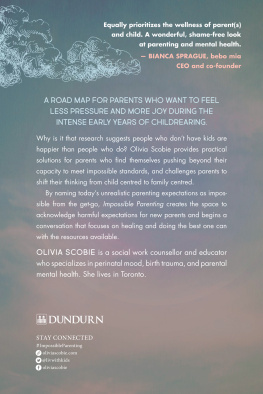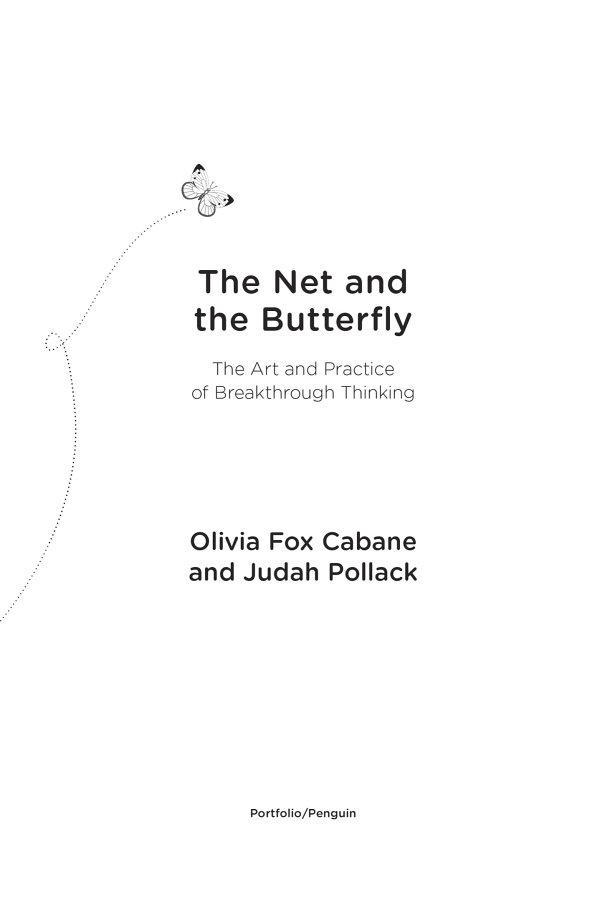Penguin supports copyright. Copyright fuels creativity, encourages diverse voices, promotes free speech, and creates a vibrant culture. Thank you for buying an authorized edition of this book and for complying with copyright laws by not reproducing, scanning, or distributing any part of it in any form without permission. You are supporting writers and allowing Penguin to continue to publish books for every reader.
Most Portfolio books are available at a discount when purchased in quantity for sales promotions or corporate use. Special editions, which include personalized covers, excerpts, and corporate imprints, can be created when purchased in large quantities. For more information, please call (212) 572-2232 or e-mail specialmarkets@penguinrandomhouse.com. Your local bookstore can also assist with discounted bulk purchases using the Penguin Random House corporate Business-to-Business program. For assistance in locating a participating retailer, e-mail B2B@penguinrandomhouse.com.
While the author has made every effort to provide accurate telephone numbers, Internet addresses, and other contact information at the time of publication, neither the publisher nor the author assumes any responsibility for errors or for changes that occur after publication. Further, the publisher does not have any control over and does not assume any responsibility for author or third-party Web sites or their content.
To Dr. Marcus Raichle, discoverer of the default mode network, whose breakthrough made our work possible, whose science underlies this entire book, and for whose guidance we are profoundly grateful.
Introduction
IN A SMALL city in Switzerland on a fine spring day in 1905, a young patent clerk left his one-year-old son and wife at home to go see his best friend about a riddle. The two friends loved exchanging ideas, from philosophy to physics, from art to electricity, and this morning our young patent clerk wanted to discuss a problem that had been vexing him for some time.
For the past year, hed been especially focused on a physics theory hed begun formulating ten years ago. He laid out every detail of the problem he had been struggling with, and for an entire day the two friends analyzed ideas and rehashed every aspect of the dilemma.
As the sun set, the young man finally concluded that the theory hed been working on for a decade was going nowhere. It had hit a brick wall. Demoralized and dejected, he declared that he was giving up the entire quest. And so Albert Einstein shuffled home and went to sleep.
You can imagine his friends surprise the next morning when, answering an urgent knock, he opened the door to see Einstein, who bypassed polite greetings and blurted out, Thank you. Ive completely solved the problem. With that, he returned home
What happened inside Einsteins brain that night? After years of effort, why did the answer suddenly appear just when he had given up?
Einsteins experience was a classic example of the way our brain creates breakthrough ideas, completely new and novel ways of solving problems and looking at the world. And believe it or not, if youve ever had a breakthrough, the exact same thing happened inside your brain, too.
This process was deliberately, consciously used by both Salvador Dali and Thomas Edison. Dali would put his elbow on a table and rest his chin on his upturned palm with a spoon between his chin and his palm.
For many, breakthroughs are like butterfliesbeautiful and awe-inspiring, yet erratic and elusive. Some people think they happen through hard work and concentration. The harder you focus on the breakthrough youre seeking, the more likely you are to get it. Others think they are spontaneous, inexplicable, and unpredictable. We describe these moments of inspiration as eureka or aha moments, or we speak of having a lightbulb go off. Theyre purely accidental, and theres no way to induce them. Still others believe they are for the lucky and the extraordinary. The truth is that we all can have breakthroughs.
In fact, breakthroughs are not accidental, they can be induced, and we are going to show you how. Thanks to new neuroscience research, we now know how the breakthrough process works and Breakthroughs, like butterflies, may fly an unpredictable path, but it is possible to capture them if we build the right net.
Advances in neuroscience have revealed that these seemingly unpredictable, sudden, and singular flashes are actually a predictable part of an integrated mental process. But this sudden flash of insight is actually the only visible step of a much longer process, and Einstein knew it. Thinking it through afterwards, you can always discover the reasons.... Intuition is nothing but the outcome of earlier intellectual experience.
Every single person on the planet has the ability to generate creative breakthroughs inside their brains: you cant be born without it. We all have a natural ability to create butterflies. However, you may not know how to get the most out of it, or even how to access it. You need skills and practice to build and wield a net.
Breakthrough thinkers impact the world, whether theyre Louis Pasteur, Steve Jobs, or Mahatma Gandhi. Breakthroughs The power of breakthrough thinking is equally valuable at home: you could have a breakthrough about whats been holding you back from getting into a relationship, or what you need to fix in your marriage.
Breakthrough thinking is also critical in business: innovation breakthroughs are worth millions, sometimes billions. Right now, companies are spending time and effort to create a culture of innovation breakthroughs around their employees. But what about the inside of their employees heads? As it turns out, even if your employees are surrounded by an innovative organization or culture, if their mental culture isnt conducive, potential breakthroughs will never be realized.
Are you being asked to be far more creative at work than you signed on for? Does your path forward in your career suddenly depend on your ability to be innovative? Has breakthrough thinking become an expectation rather than an aspiration? Whether you already have regular breakthroughs and want to be able to direct them, or think that you just dont have that kind of brain, we have good news: breakthrough thinking is a skill that you can acquire and practice.
In the following pages, you are going to learn all about how your brains breakthrough process works, how to access it, what might be holding it back, and how to turbocharge it.
We do, however, want to be clear: we will not be giving you a magic formula. Owning a net isnt sufficient to catch butterflies: you need practice, patience, skill, and a little luck. Because the breakthrough experience varies by individual, there is no guaranteed step-by-step procedure. No one breakthrough looks exactly like any other; they all emerge through their own unique process. Thats why the breakthrough experience is not a directed, repeatable, linear one, but rather an evolving, unfolding, creative process with many different elements.















